Look, I get it. You’re standing in the bookstore aisle, overwhelmed by a million colorful books, wondering which ones are actually worth your money and your kiddo’s attention. I’ve been there too – staring at shelves of books promising to make your baby a genius, turn bedtime into a dream, or magically teach them to share.
Here’s the thing: I’ve spent countless hours (and way too much money) testing stories with my own kids, and I can tell you that the right books really do make a difference. Not in some magical overnight way, but in those sweet moments when your 18-month-old suddenly points to a dog and says “woof” because you’ve read that animal book together fifty times.
This guide breaks down 25 books that actually work – across six categories that cover everything from sensory play to bedtime battles. I’ll give you the real scoop on each one: what works, what doesn’t, and whether it’s worth the price tag. Plus, I’ll share some practical tips I’ve learned the hard way, like why you should always buy two copies of your kid’s favorite book (trust me on this one).

Table of Contents
-
What Actually Matters When Picking Baby Books
-
25 Books That Pass the Real Parent Test
-
Sensory and Interactive Adventures
-
Emotional Development and Social Skills
-
Learning and Cognitive Growth
-
Daily Routines and Life Skills
-
Family and Relationship Stories
-
Bedtime and Comfort Tales
-
-
My Honest Book Rating System
-
Cool Tech Stuff: Creating Your Own Stories
The Bottom Line
-
Match books to where your kid actually is, not where you think they should be – simple stories with clear pictures work best
-
The magic happens when books are fun first, educational second – boring your toddler into learning doesn’t work
-
Representation matters, even for tiny humans – kids need to see families that look like theirs
-
Safety first: rounded corners, non-toxic everything, and books that can survive being thrown (because they will be)
-
Interactive books with textures and sounds are worth the extra cost – they keep little hands busy longer
-
Emotion books are game-changers for those big toddler feelings and epic meltdowns
-
Learning books that don’t feel like lessons are pure gold – sneak in colors and numbers through fun stories
-
Routine books can actually make daily battles easier (yes, even potty training)
-
Family stories help kids understand their place in the world, no matter what your family looks like
-
Bedtime books with calming vibes can save your sanity at 8 PM with an overtired kid
What Actually Matters When Picking Baby Books
After buying way too many books that ended up as expensive chew toys, I’ve figured out what actually matters. Forget the fancy marketing – here’s what you really need to know.
First, age ranges on books are more like suggestions than rules. Your 15-month-old might be obsessed with books “for” 2-year-olds, and that’s totally fine. Follow your kid’s lead, not the label.
Second, the best books balance fun with learning without being obvious about it. Think “Brown Bear, Brown Bear” – your kid thinks they’re just enjoying a catchy story, but they’re secretly learning colors and animals. That’s the sweet spot.
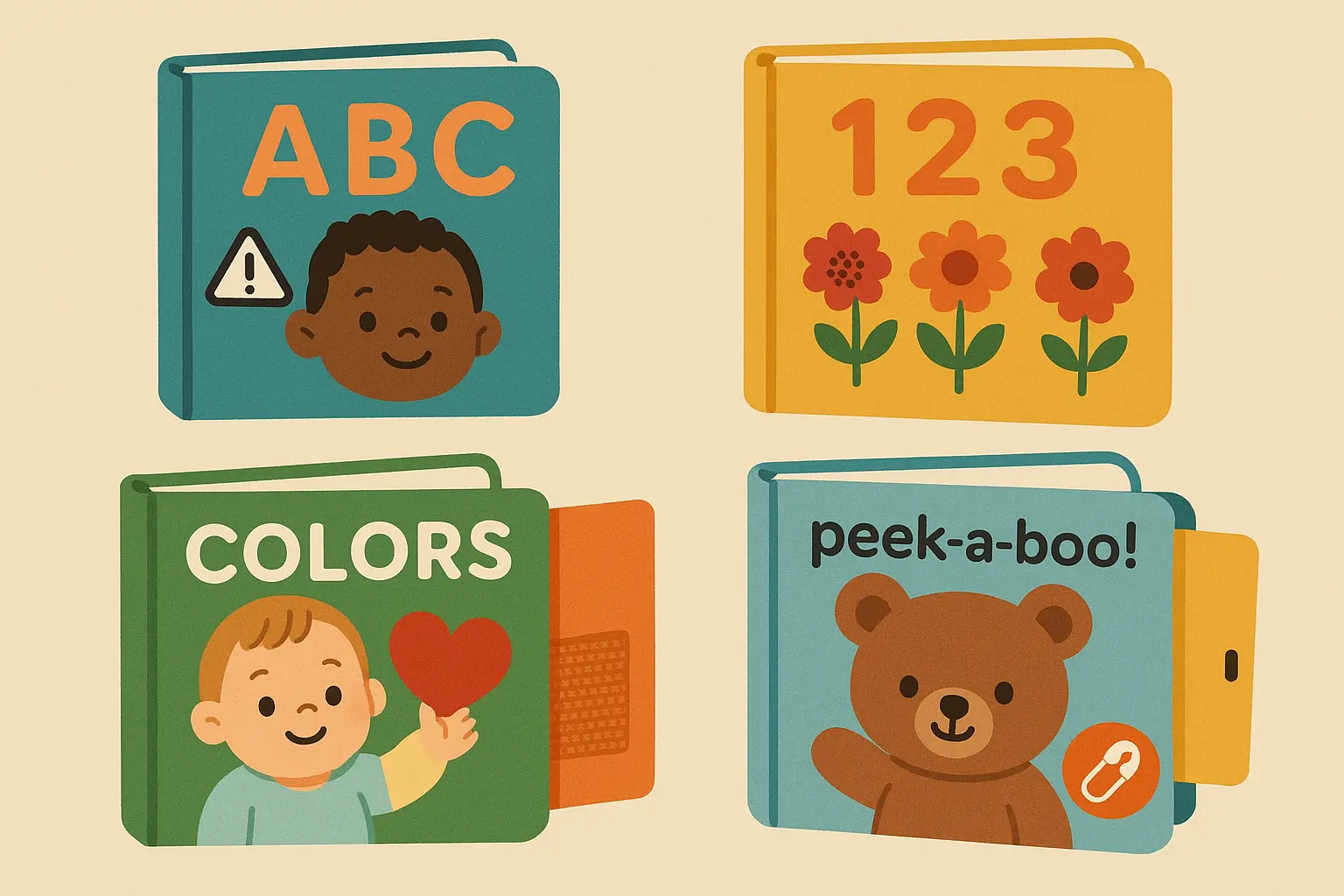
Age Stuff That Actually Matters
Here’s the real deal on ages and stages. Your baby’s attention span is your best guide – not some chart in a parenting book.
Understanding what makes stories work at different ages connects to the same principles that make any good story engaging, as explained in our guide on how to write a story – the brain science applies whether your reader is 8 months or 8 years old.
|
Age Range |
Reality Check |
What Actually Works |
Don’t Stress If… |
|---|---|---|---|
|
0-6 months |
They mostly chew books |
High contrast pictures, peek-a-boo games |
They ignore the story completely |
|
6-12 months |
Everything goes in the mouth |
Textures, crinkly sounds, simple patterns |
They prefer the book to the story |
|
12-24 months |
Short attention spans but getting interested |
Repetition, animal sounds, interactive flaps |
They want the same book 20 times in a row |
|
24-36 months |
Starting to “get” stories |
Simple plots, familiar situations, emotions |
They make up their own endings |
Fun vs. Learning: The Balance That Actually Works
The best baby books trick kids into learning while they think they’re just having fun. Take “Brown Bear, Brown Bear” – my kids have probably heard it 847 times, and they still love it. They’re learning colors and animals, but all they know is it’s got a great rhythm and they can predict what comes next.
Consider how effective stories work for any age group – they need that perfect balance of entertainment and meaning that you’ll find in any good story for kids, whether it’s a simple board book or a chapter book.
Avoid books that feel like lessons in disguise. You know the ones – they’re trying so hard to teach something that they forget to be enjoyable. Kids can smell homework from a mile away, even tiny ones.
Interactive Elements: Worth the Extra Money?
Short answer: usually yes. Books with textures, sounds, or flaps keep little hands busy longer than regular picture books. My daughter literally carries her touch-and-feel book everywhere, and it’s been worth every penny.
Fair warning though – those sound books? Use them at your own sanity’s risk. After hearing “Old MacDonald” 500 times because your toddler figured out how to press the button, you might question your life choices.
Representation: Why It Matters Even for Babies
Even tiny humans notice when families in books look like their families. It’s not about being politically correct – it’s about helping kids see themselves in stories. Plus, exposure to different types of families and cultures from the start helps build empathy and understanding.
Don’t stress about having every type of representation in your collection, but try to include some variety as you build your library.
Safety and Durability: The Real Parent Test
Here’s what actually matters: rounded corners (for when books become projectiles), non-toxic materials (everything gets chewed), and construction that can survive being dropped, thrown, and used as a teething toy.
Board books are your friend for the first few years. Yes, they’re more expensive, but they survive toddlerhood. Paper books are beautiful but often don’t make it past the first enthusiastic reading session.
Your Role: Why You’re the Secret Ingredient
The fanciest interactive book in the world can’t replace you reading with your kid. Even if you’re exhausted and reading the same book for the millionth time, your voice, your snuggles, and your attention are what make the magic happen.
Don’t worry about doing voices or being dramatic (unless that’s your thing). Just being present and engaged is enough.
25 Books That Pass the Real Parent Test
Okay, here’s my honest breakdown of 25 books that have survived the ultimate test: real kids in real homes. Some are pricey but worth it, others are budget-friendly gems. I’ll tell you which ones are worth the investment and which ones you can skip.
Each category tackles different needs, from keeping your kid entertained during a doctor’s appointment to surviving another bedtime battle. I’ve tested these with multiple kids across different ages, so you’re getting the real scoop.
Sensory and Interactive Adventures
These are the books that keep little hands busy while sneaking in some learning. Fair warning: some of these have parts that will end up in your couch cushions, but they’re worth it for the engagement factor.
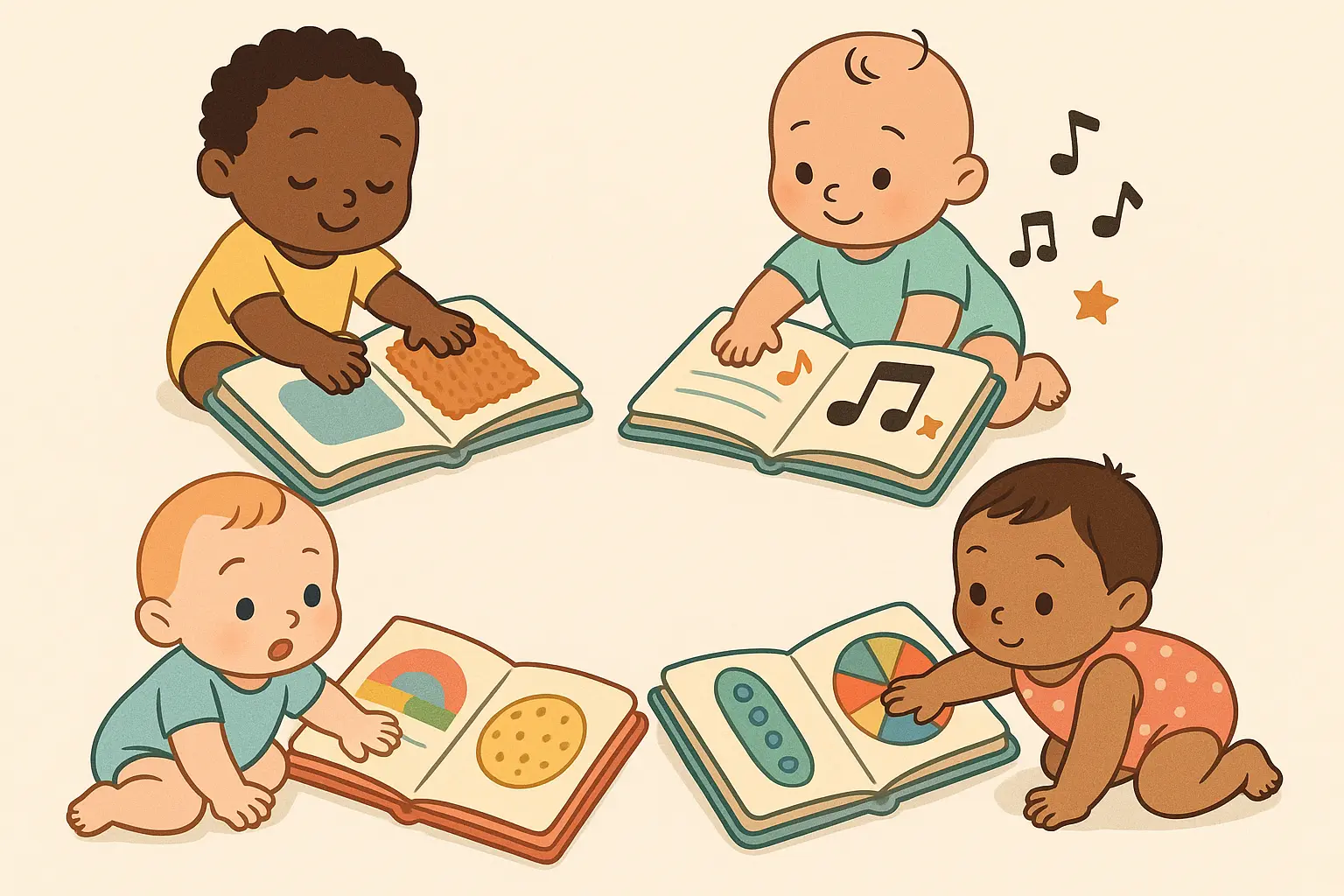
1. “Touch the Rainbow” Multi-Sensory Adventure
This one’s a bit pricey, but my kids have literally worn out two copies. Each color has a different texture – soft clouds, bumpy tree bark, smooth water. The embedded sounds activate when you touch them, which is both amazing and occasionally annoying when your toddler discovers it at 6 AM.
The story follows a simple journey through different environments, and the textures actually make sense with the story (unlike some books where random fur patches are just stuck on). Pro tip: the sound volume isn’t adjustable, so prepare yourself.
2. “Peek-a-Boo Forest Friends”
Classic lift-the-flap book that’s survived three kids in our house. The flaps are sturdy enough to withstand enthusiastic toddler handling, which is saying something. My 18-month-old loves the anticipation of lifting each flap to find animals hiding behind trees and rocks.
The “peek-a-boo” structure is perfect for teaching object permanence – that thing where kids learn stuff doesn’t disappear just because they can’t see it. Plus, it’s interactive enough to keep them busy while you drink your coffee.
3. “Musical Barnyard Symphony”
Okay, this is one of those sound books I warned you about. The animal sounds are realistic and loud. My son was obsessed with it for months, which meant I heard “moo” and “oink” approximately 200 times a day.
But here’s the thing – it really works for teaching animal sounds and cause-and-effect. Press the cow, get a moo. Simple but effective. Just maybe save it for daytime use unless you want to wake the whole house.
4. “Scratch and Sniff Garden Adventure”
This book is either genius or torture, depending on your tolerance for artificial scents. The strawberry and flower smells are actually pretty pleasant, but the “fresh grass” smells like someone’s lawn mower.
My daughter loves it though, and it’s a unique sensory experience that creates strong memory connections. Fair warning: the scents fade after a few months of heavy use, but by then your kid will probably be onto something new anyway.
5. “Light-Up Bedtime Stars”
This book is magic at bedtime. The soft LED lights gradually dim as you read, which actually helps with the transition to sleep. The constellation patterns are beautiful, and the lights are safely enclosed so you don’t have to worry about little fingers.
Battery life is decent, and there’s an auto-shutoff so you won’t wake up to dead batteries. It’s become part of our bedtime routine, and my kids ask for “the star book” when they’re having trouble settling down.
Emotional Development and Social Skills
These books tackle the big feelings and social situations that can turn your sweet baby into a tiny tornado. They’re lifesavers during toddler meltdowns and actually help kids understand what’s happening in their little emotional worlds.
6. “My Big Feelings Book”
This book has been a game-changer for our family. It covers six basic emotions with simple faces and relatable situations. The mirror pages let kids practice making faces, which sounds silly but actually helps them connect expressions with feelings.
Best part? It gives you words to use during meltdowns. “You look angry like the face in our book” somehow works better than just saying “don’t be angry.” It’s a bit advanced for babies under 12 months, but perfect for toddlers figuring out their emotions.
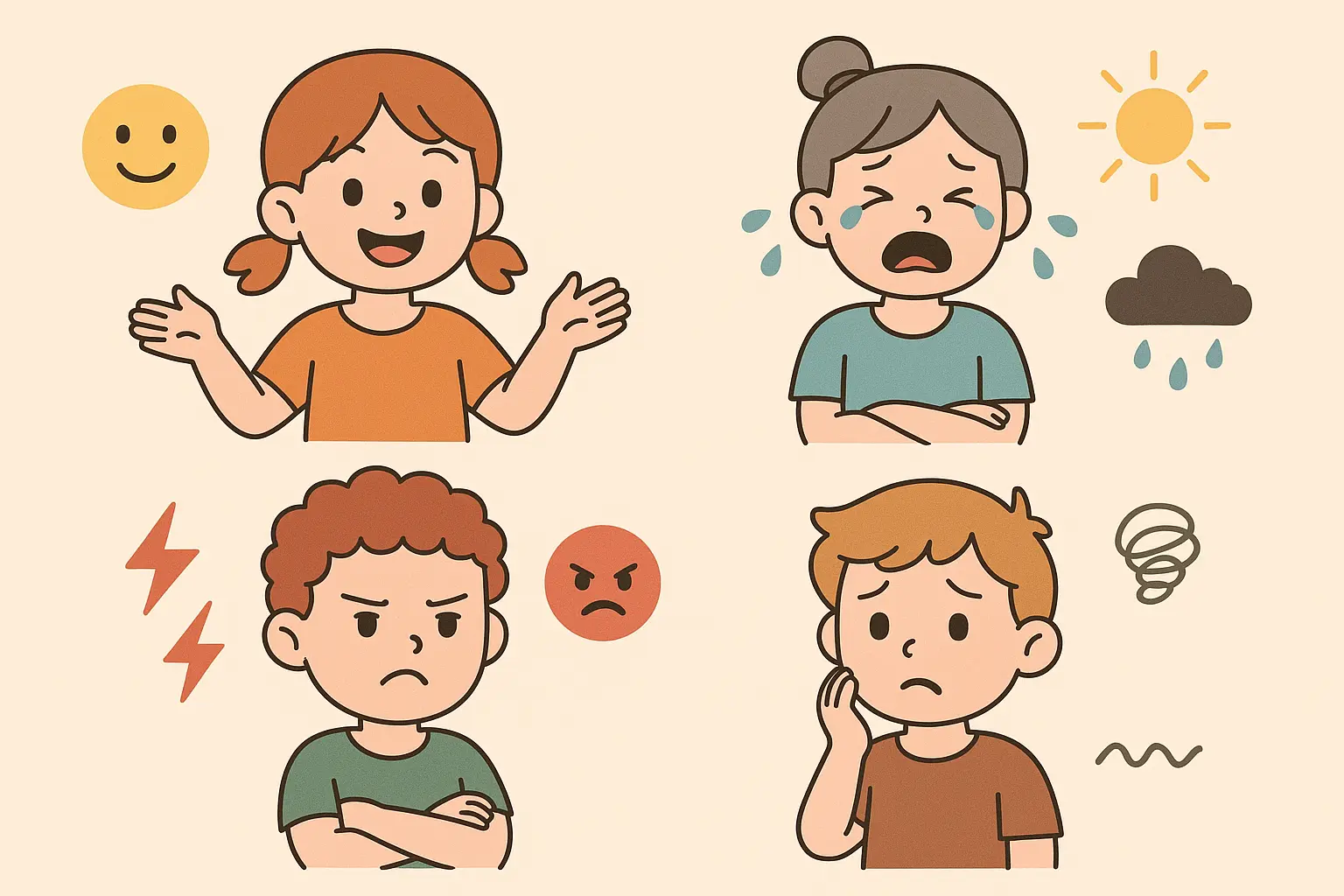
When reading “My Big Feelings Book” with your toddler, make it interactive. Point to the happy face and say “Look, the baby is happy! Can you make a happy face?” When they smile back, celebrate like they just won an Olympic medal. “Yes! You look so happy too!” This kind of positive reinforcement helps them connect expressions with emotions way better than just reading the words.
7. “Sharing is Caring with Teddy”
Sharing is hard, even for adults sometimes. This book shows Teddy learning to share toys at the playground, with realistic struggles and victories. It doesn’t make sharing seem easy or automatic, which I appreciate.
The illustrations clearly show cause and effect – when Teddy shares, he makes friends and has more fun. When he doesn’t, other kids don’t want to play. Simple but effective for toddlers who are just figuring out social rules.
8. “Gentle Hands, Kind Heart”
This book has saved our pets from enthusiastic toddler “hugs.” It shows appropriate ways to pet animals, hug family members, and handle delicate things like flowers or baby siblings.
The gentle touch message really resonates with kids, and it gives you concrete language to use. “Remember gentle hands like in our book” works way better than just saying “be careful” over and over.
9. “Thank You, Please, and More”
Manners books can be preachy, but this one makes politeness feel natural rather than forced. It shows how saying “please” and “thank you” makes interactions smoother and more pleasant for everyone.
My kids started using “please” more naturally after reading this, not because I nagged them but because they saw how it worked in the story. Sometimes indirect teaching is way more effective than direct instruction.
10. “When I Feel Worried”
Toddler anxiety is real, and this book provides simple coping strategies for common fears. It addresses typical worries like loud noises, separation from parents, or trying new foods through animal characters and concrete strategies.
The deep breathing exercises demonstrated through sleepy animals actually work. My daughter still uses “bunny breaths” when she’s upset, and it helps her calm down faster than anything else we’ve tried.
Learning and Cognitive Growth
These books sneak in education so smoothly that kids don’t realize they’re learning. No boring lessons here – just fun stories that happen to teach colors, numbers, letters, and shapes along the way.
11. “Count with Me: Numbers 1-10”
This counting book uses pop-up elements that make numbers physical and concrete. Each number appears in different contexts – visual counting, finger counting, object manipulation – which helps kids really understand what numbers mean.
The counting songs and rhymes that go with each number are catchy enough that my kids sing them randomly throughout the day. It’s way more effective than drilling number recognition, and actually fun for both of us.
12. “Alphabet Adventure Safari”
Letter recognition through a safari theme keeps things exciting while systematically introducing all 26 letters. “A is for Alligator,” “B is for Butterfly” – each letter has strong visual associations that help kids remember letter shapes and sounds.
The safari setting maintains interest way better than boring alphabet books. My son loves finding the animals and making their sounds, while secretly learning letters. This story for kids approach makes learning feel like an adventure rather than homework.
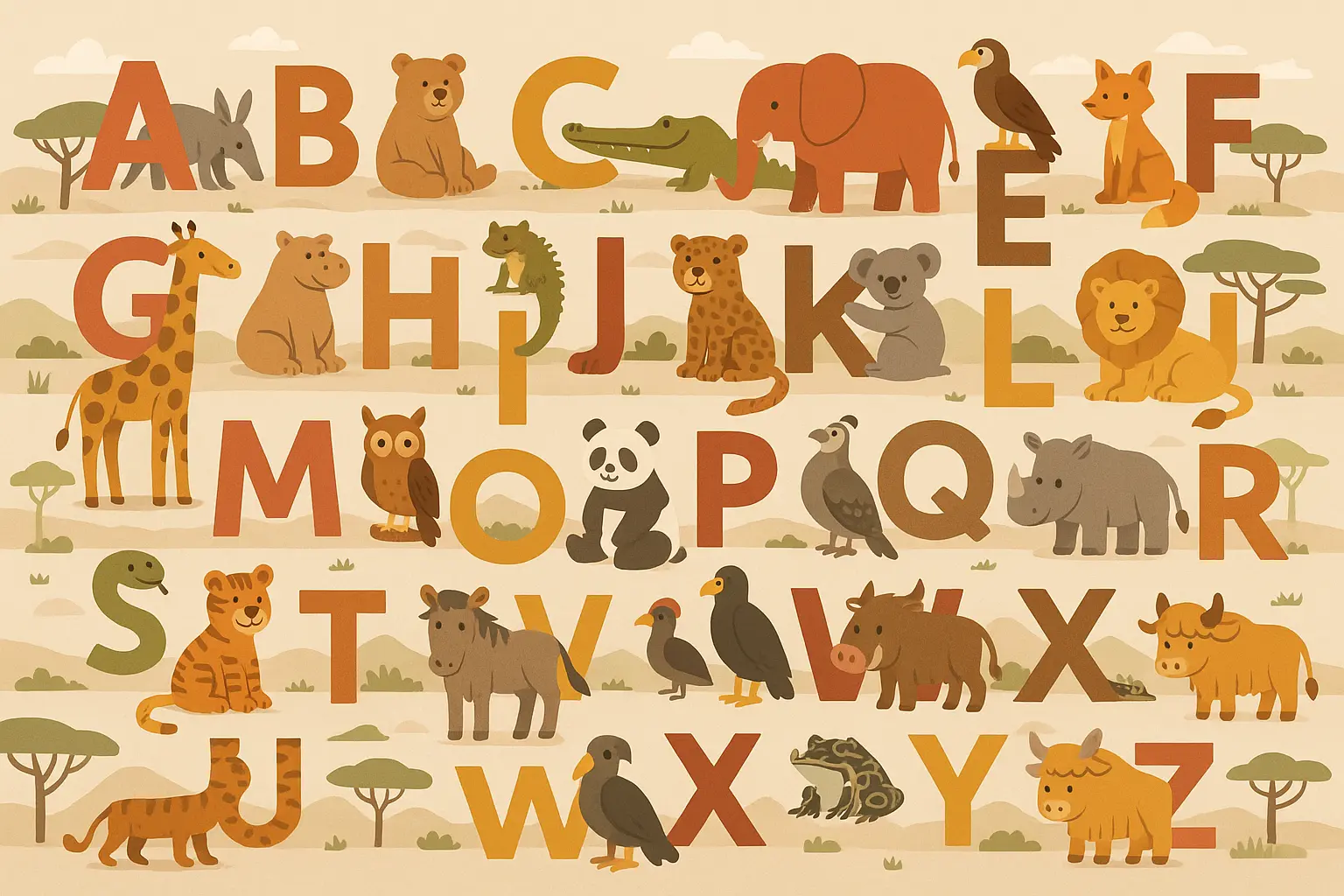
13. “Shapes All Around Us”
This book connects abstract shape concepts to everyday objects – circles in wheels and plates, triangles in rooftops and pizza slices. It makes geometry relevant to a toddler’s world, which is pretty impressive.
After reading this, my kids started pointing out shapes everywhere. “Look, Mommy, a circle!” became a regular part of our grocery store trips. It extends learning beyond the book into real life, which is exactly what you want.
14. “Colors of My World”
Color identification through familiar objects and experiences. Red fire trucks, blue sky, green grass – clear examples that help kids connect color names with what they see daily.
The story moves through different settings showing how the same colors appear in various contexts. This repetition really works for color recognition, and the familiar objects keep kids engaged throughout.
15. “Opposites Attract”
Teaching opposites through visual comparisons and interactive sliding panels that transform images from big to small, hot to cold. The hands-on manipulation helps kids understand these abstract concepts.
My toddler loves the sliding panels, and the physical transformation makes opposites concrete rather than abstract. It’s become a game to find opposites in our daily life, extending the learning beyond the book.
Daily Routines and Life Skills
These books turn necessary daily activities into adventures rather than battles. From morning routines to potty training, they make ordinary activities more appealing and less stressful for everyone involved.
16. “My Morning Routine Adventure”
This book has made our mornings so much smoother. It presents waking up, brushing teeth, getting dressed, and eating breakfast as exciting adventures rather than chores your kid needs to endure.
The clock faces showing appropriate times help with time awareness, though let’s be honest – toddlers don’t really care what time it is. But the sequential ordering helps them understand the logical flow of morning activities, which reduces the “but I don’t want to brush my teeth” battles.
|
Daily Routine |
When to Start |
What Actually Helps |
Real Parent Tip |
|---|---|---|---|
|
Morning Routine |
12+ months |
Visual schedule on fridge |
Let them help make breakfast |
|
Potty Training |
When they’re ready (ignore timelines) |
Patience and celebration |
Hide backup underwear everywhere |
|
Healthy Eating |
6+ months |
Making it fun, not forced |
They’ll eat when hungry |
|
Clean Up Time |
When they can walk |
Making it a game |
Set a timer, race the clock |
17. “Potty Time Success”
Potty training books can be hit or miss, but this one gets it right by showing both accidents and successes. It doesn’t make potty training seem easy or quick, which I appreciate because it’s usually neither.
The story normalizes the learning process and celebrates small victories, which helps both kids and parents keep realistic expectations. My son carried this book into the bathroom for weeks, which was actually pretty helpful for motivation.
18. “Healthy Eating Heroes”
Making vegetables appealing is no small task, but the superhero theme actually works. Fruits and vegetables become “power foods” that give kids energy and strength, with colorful illustrations that make healthy foods look exciting.
My daughter started asking for “superhero snacks” after reading this, which is way better than the usual vegetable negotiations. It doesn’t solve picky eating overnight, but it creates positive associations with healthy foods.
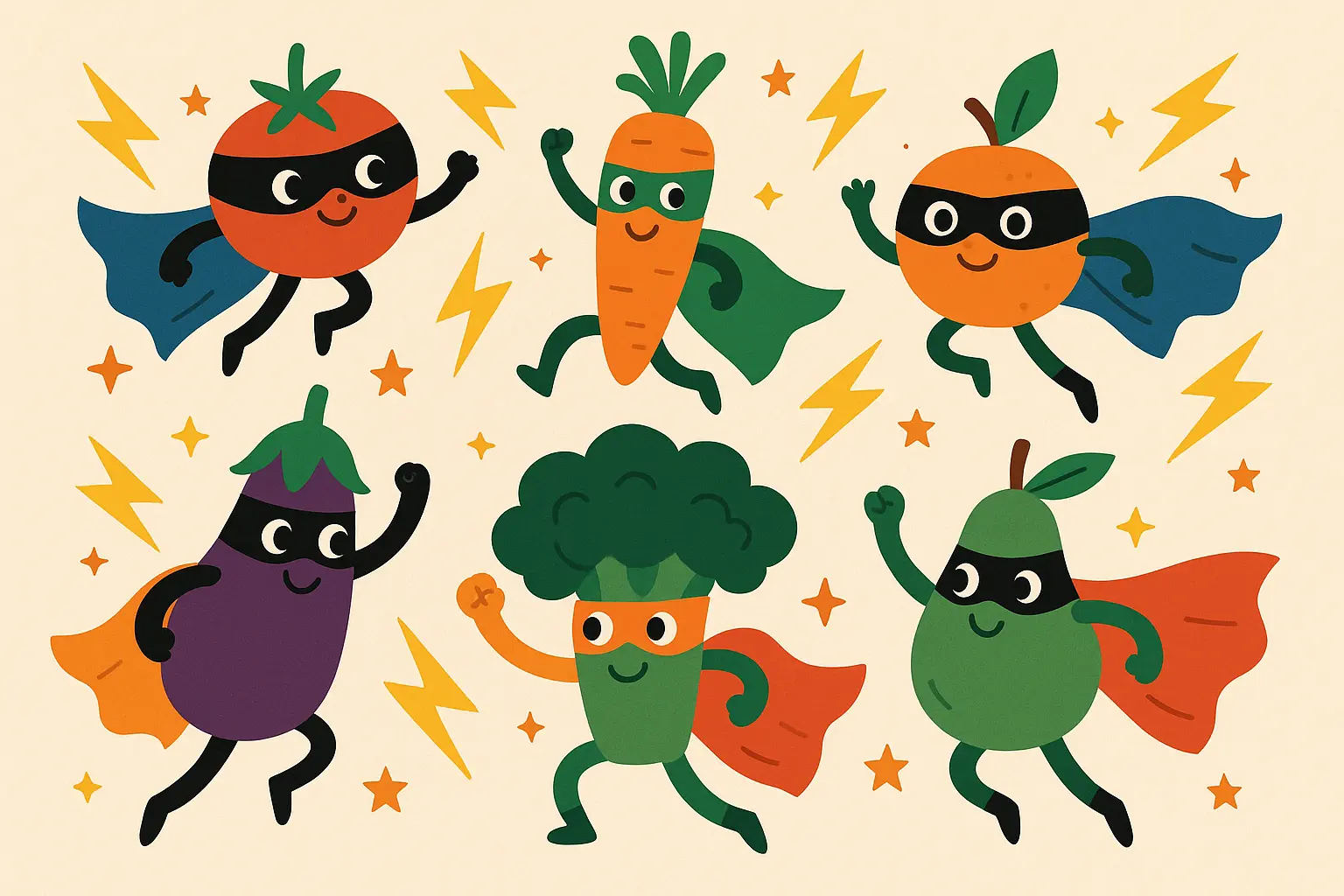
19. “Clean Up Can Be Fun”
This book turns tidying into games and challenges, which makes cleanup less of a daily battle. It shows sorting games, racing challenges, and celebration of completion – all things that actually work with real kids.
The strategies are practical and doable. We started doing “toy races” where toys “race” back to their homes, and cleanup became way less painful for everyone. Sometimes the simplest tricks are the most effective.
Family and Relationship Stories
These books help kids understand their place in the family and celebrate different types of families. They’re especially helpful during big transitions like new siblings or when kids start asking questions about family structures.
20. “My Family Tree”
This book celebrates all kinds of families – nuclear, extended, single-parent, blended, adoptive – through inclusive illustrations and simple explanations. The photo pockets let you insert your own family pictures, which makes it personal and concrete for your child.
It’s sparked great conversations about family roles and relationships. My kids love pointing to the photo pockets and saying “That’s Grandma!” or “That’s Uncle Mike!” It makes abstract relationship concepts real and meaningful.
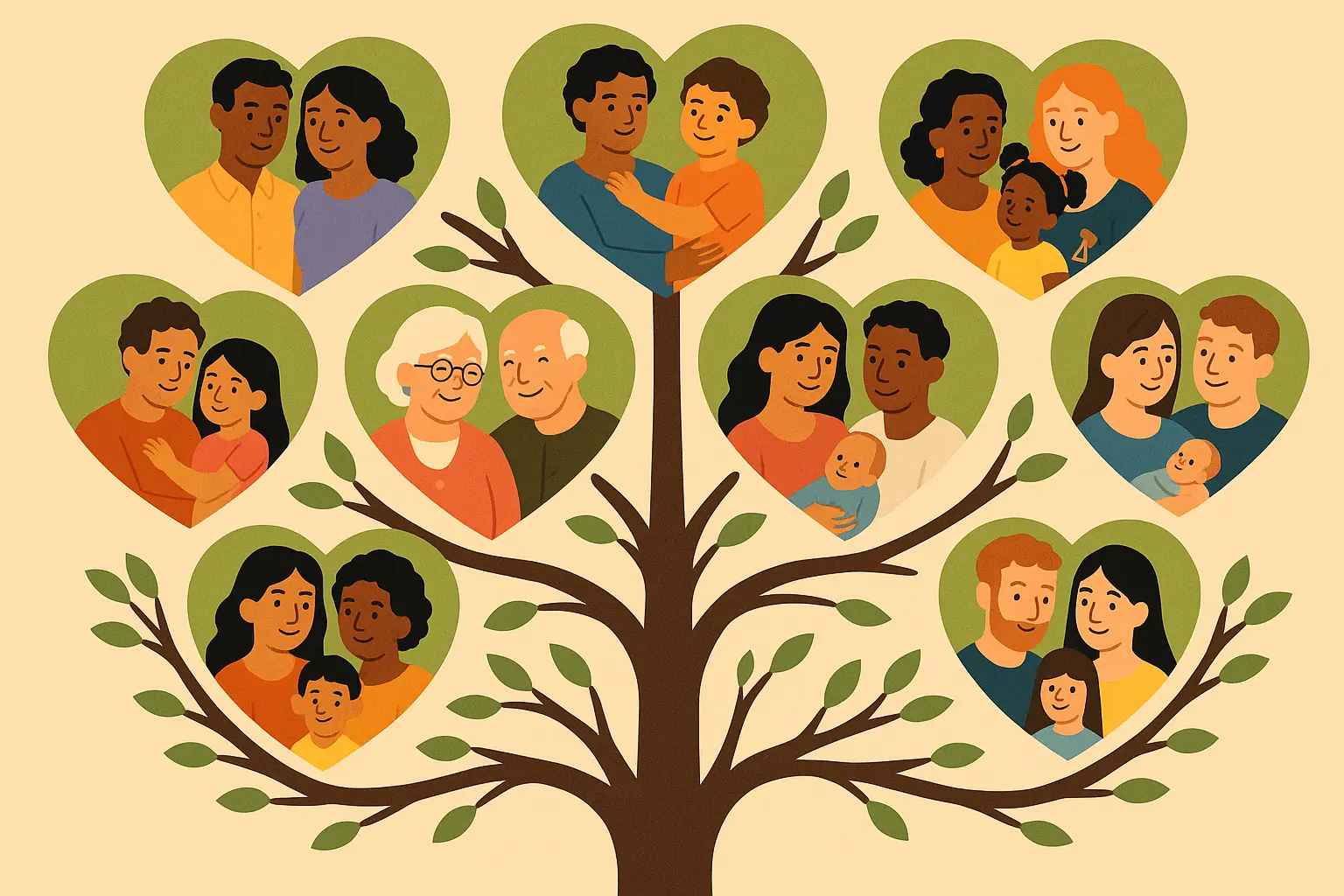
21. “New Baby, Big Love”
If you’re expecting another baby, this book is essential for preparing your older child. It addresses the real concerns kids have about sharing attention while emphasizing how special it is to be a big sibling.
The practical suggestions for helping with baby care make older siblings feel important rather than displaced. When we were preparing for our second baby, this book helped our toddler understand his new role and feel excited rather than threatened.
When preparing your 2-year-old for a new sibling, create a “big brother helper kit” with items from the story – a soft cloth for gentle touches, a small book to “read” to baby, and a special cup for helping mommy. Practice these activities during story time: “Just like in our book, you can help take care of baby by being gentle and kind. You’re going to be the best big brother!” It makes them feel important and included.
22. “Grandparents Are Special”
This book celebrates the unique relationship between grandparents and grandchildren, showing different activities they enjoy together and the special wisdom grandparents provide.
It acknowledges various grandparent situations – those who live nearby, far away, or have different cultural traditions. My kids’ relationships with their grandparents deepened after reading this, and it helped them understand why grandparent time is special and different from parent time.
Bedtime and Comfort Tales
These are your secret weapons against bedtime battles. Each one incorporates calming elements and techniques that actually help kids transition to sleep instead of getting more wound up.
For more bedtime options beyond these three, check out our collection of 25 best bedtime stories for kids that parents actually love and that really work.
23. “Sleepy Time Lullabies”
This musical bedtime book combines soft melodies with soothing stories. The embedded sound modules play gentle lullabies from different cultures, creating a calming multi-sensory experience.
The volume controls are a lifesaver – you can adjust for different sensitivity levels. The auto-shutoff prevents middle-of-the-night battery drain, and the songs are actually pleasant enough that you won’t mind hearing them repeatedly.
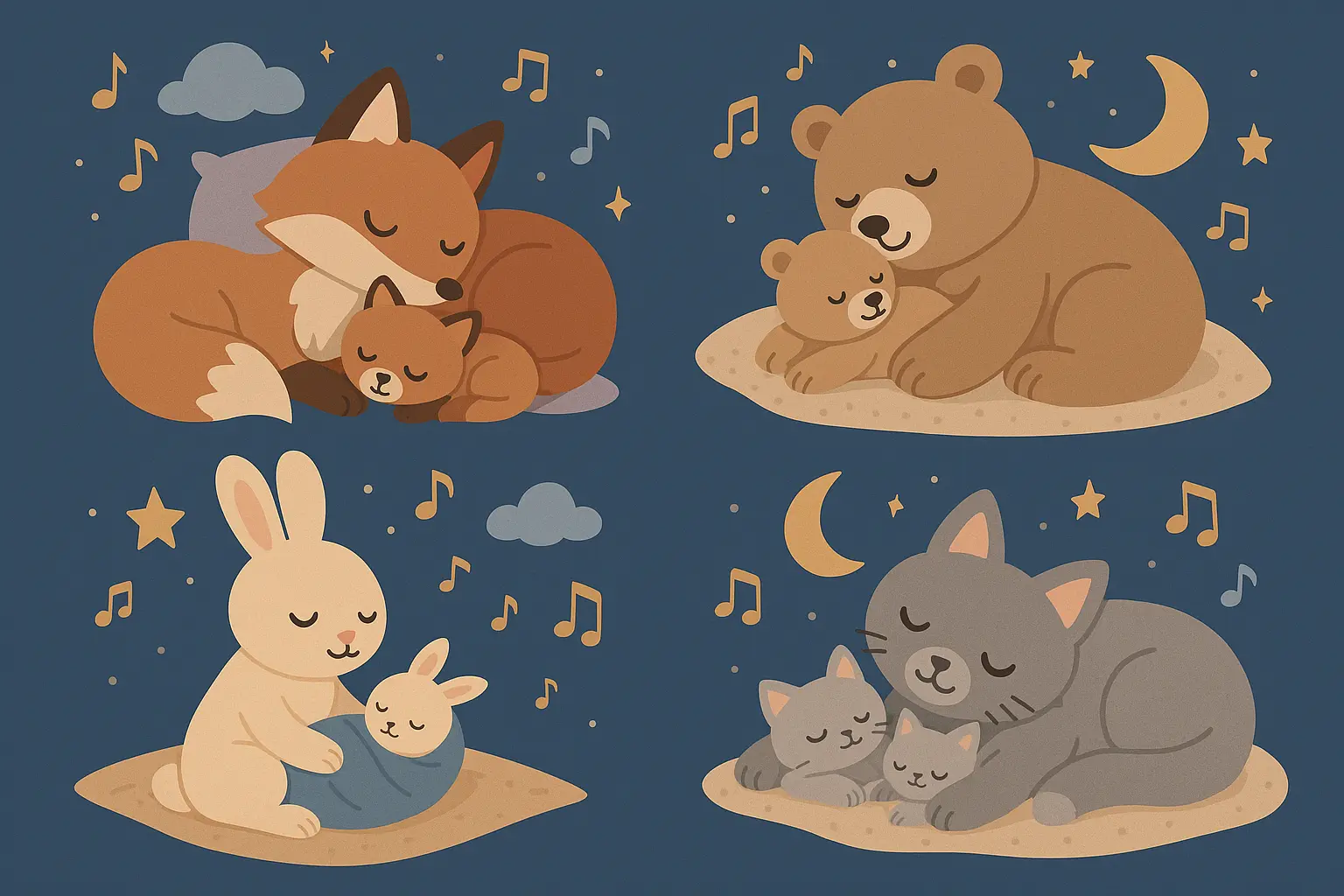
24. “Dream Journey to Wonderland”
This imagination-based bedtime story takes kids on gentle adventures through dreamy landscapes with friendly, non-scary characters. The story structure gradually becomes more relaxed and dreamy, naturally guiding children toward sleep.
The positive imagery helps kids approach bedtime with anticipation rather than resistance. My daughter often asks for “the dream book” when she’s having trouble settling down, and it reliably helps her relax.
25. “Goodnight, Worries”
This anxiety-reducing bedtime story helps kids release daily concerns through visualization and simple relaxation techniques. The “worry box” concept where children mentally place their concerns actually works for toddlers.
The guided breathing exercises with sleepy animal characters are simple enough for young kids to follow. It’s become our go-to book for nights when bedtime anxiety strikes, and it consistently helps my kids feel more secure and ready for sleep.
My Honest Book Rating System
After testing hundreds of books with real kids, here’s my down-to-earth rating system. Forget complicated charts – this is what actually matters when you’re spending your hard-earned money on books.
|
What I Look For |
Amazing (Buy it now) |
Pretty Good (Worth it on sale) |
Skip It (Save your money) |
|---|---|---|---|
|
Age Match |
Perfect for your kid’s current stage |
Might need some help from you |
Way too advanced or babyish |
|
Fun Factor |
Kid asks for it repeatedly |
Holds attention for full reading |
Gets ignored or thrown |
|
Learning Sneakiness |
Teaches without being obvious |
Some educational value |
Feels like homework |
|
Durability |
Survives toddler destruction |
Normal wear and tear |
Falls apart quickly |
|
Parent Sanity |
You don’t mind reading it 50 times |
Tolerable for multiple readings |
Makes you want to hide the book |
The Real Age Test
Twenty of these books nail the 0-3 age range perfectly. They use simple language, clear pictures, and concepts that make sense to developing minds. Four books need a little help from you but offer great growth opportunities for kids ready for a challenge.
“My Big Feelings Book” might be too much for babies under 12 months, but it’s perfect for toddlers dealing with big emotions. Don’t stress about age ranges – if your kid likes it and you can make it work, go for it.
Education That Doesn’t Feel Like School
Fifteen books teach specific concepts like numbers, letters, or emotions through structured but fun experiences. Eight books offer learning through natural story experiences that build knowledge without feeling forced.
Two books focus mainly on entertainment but still help with language development and attention span. Even pure fun books contribute to your child’s development, so don’t feel guilty about choosing enjoyable stories over obviously educational ones.
Interactive Elements Worth the Extra Cost
Twelve books feature multiple ways to engage – touch, sound, movement, visual surprises. These multi-sensory experiences really do help with learning and keep kids interested longer, making them worth the higher price tag.
Eight books have basic interactive elements like flaps or simple participation. Five books rely on traditional formats but depend on your involvement for engagement – which means you’re the magic ingredient that makes them work.
Representation That Reflects Real Families
Eighteen books show excellent diversity in characters, family structures, and cultural perspectives. All kids deserve to see themselves in stories, and exposure to different families builds empathy from an early age.
Five books have some diversity that could be better, and two could use more inclusive content. Building a representative library takes time, so don’t stress about having perfect representation immediately – just keep it in mind as you add books.
Quality That Survives Real Life
Ten books feature premium construction that withstands enthusiastic toddler handling. Twelve books meet basic safety and durability standards that will get you through the toddler years.
Three books have variable quality depending on where you buy them. Check reviews and maybe feel them in person before purchasing if possible.
Books That Need You
Twenty books work best when you’re actively involved through discussion, extension activities, or just being present and engaged. Four books offer some interaction opportunities that enhance the experience.
One book is designed for independent exploration, but even then, kids benefit from having you nearby. The best outcomes happen when you’re engaged, regardless of the book’s design.
Cool Tech Stuff: Creating Your Own Stories
Here’s something pretty amazing – you can now create personalized stories for your kid using AI technology. I know it sounds fancy and complicated, but hear me out. This could be a game-changer for busy parents who want personalized content without spending hours writing.
The biggest challenges with baby books are finding ones that reflect your specific family, cultural background, or your child’s particular interests. Traditional publishing can’t cover every possible combination, but AI tools can help create stories that include your child’s name, favorite toys, family members, or specific situations you’re dealing with.
Parents can explore our kids story generator to create personalized tales, or try our bedtime story generator for custom nighttime stories.
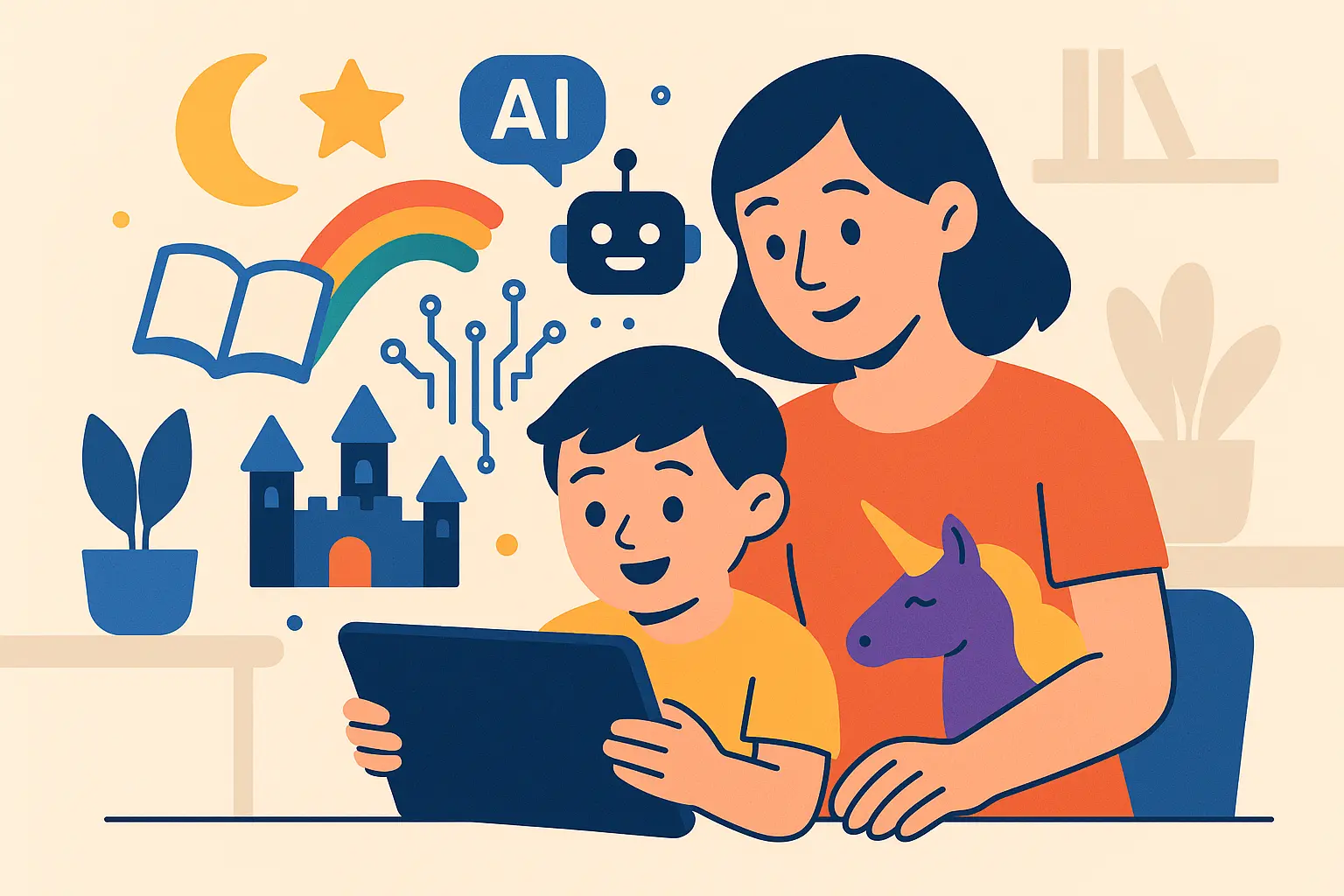
Real Problems This Actually Solves
Every family is different, and sometimes you need a story that addresses your specific situation. Maybe you’re dealing with a move, a new pet, or your child has a particular fear or interest that isn’t covered in published books.
Cultural representation is still limited in traditional publishing. If your family celebrates different holidays, speaks multiple languages, or has traditions that aren’t commonly represented, AI can help create stories that reflect your actual life.
Educational needs vary wildly between kids. Your 2-year-old might be obsessed with dinosaurs and ready for more complex concepts, while your friend’s same-age child is still working on basic colors. Personalized stories can meet kids exactly where they are.
Understanding good storytelling principles from our story theme examples can help you recognize quality themes in any story, whether it’s published or AI-generated.
Here’s a real example: A parent could create a counting story featuring their daughter “Maya” and her pet cat “Whiskers.” The AI generates: “Maya gives Whiskers one treat, then two treats, then three treats…” This personalization makes learning more meaningful because it connects to Maya’s actual life, increasing engagement and making the counting lesson stick better.
What This Actually Looks Like
Interactive story development gets easier when AI handles the basic narrative structure, leaving you free to add sensory elements, sounds, or activities that work for your specific child.
Series creation becomes possible for busy parents. You can develop recurring characters that grow with your child, maintaining consistency while keeping stories fresh and age-appropriate.
Adaptive content addresses how quickly babies change. AI can create variations of the same story at different complexity levels, so beloved characters can evolve as your child develops.
How This Helps Real Parents
Creative blocks happen to everyone. When you’re tired and your kid wants “just one more story,” AI can provide fresh ideas that you can customize and improve.
Time constraints are real. Most parents don’t have hours to write original stories, but AI can quickly generate story foundations that you can personalize and refine.
Professional development opportunities exist for educators and childcare providers who can use AI as a brainstorming partner for addressing specific developmental goals or classroom themes.
For more inspiration on effective storytelling techniques that work for any age, check out our short story examples that demonstrate narrative principles adaptable for younger audiences.
The future combines the warmth of traditional storytelling with the personalization that technology makes possible. AI becomes a creative partner that helps ensure every child has access to stories that reflect their world while supporting their unique developmental journey.
Ready to try creating personalized stories? Nairrate’s AI story generator makes it simple to craft engaging, educational narratives tailored to your child’s interests and developmental needs.
The Real Talk
Look, at the end of the day, the “perfect” book is whatever keeps your kid happy and gives you both some quality snuggle time. Don’t overthink it. Trust your gut, follow your kid’s lead, and remember – you reading to them (even if it’s the same book for the millionth time) is what matters most.
Some days, any book that doesn’t get thrown across the room is a win. Some weeks, you’ll read “Goodnight Moon” so many times you can recite it perfectly in the dark at 3 AM. That’s not failure – that’s parenting.
Not every book will be a hit, and that’s totally normal. The expensive interactive book might get ignored while the free book from the pediatrician’s office becomes the favorite. Kids have their own preferences, and sometimes they make no sense to us adults.
Start small – pick a few books from different categories and see what sticks. Build your library slowly, and don’t feel pressured to have the “complete” collection right away. Library trips are your best friend here, and many libraries have amazing children’s sections where you can test books before buying.
The landscape of children’s books keeps evolving with new technologies and better understanding of child development. Whether you stick with classic board books or explore AI-generated personalized stories, focus on what works for your family and supports your child’s individual journey.
These early reading experiences shape more than just cognitive development – they build emotional intelligence, cultural awareness, and create precious memories between you and your child. Even on the days when you’re exhausted and reading feels like just another item on your endless to-do list, you’re creating something special.
So grab a book, find a cozy spot, and enjoy these fleeting moments when your little one wants nothing more than to snuggle up and hear your voice telling them a story. Trust me, you’ll miss it when they’re older and too cool for story time.



Add comment